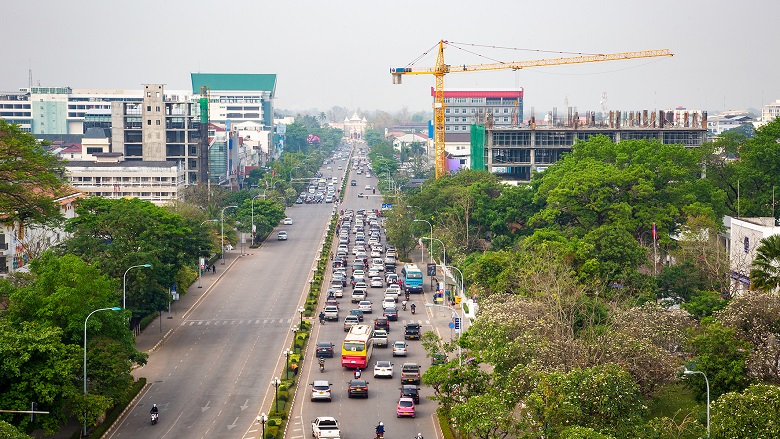Economic growth remains robust despite recent deceleration.
- Economic growth in 2018 is estimated to remain robust at 6.5 percent, although it has decelerated from 6.9 percent in 2017.
- Despite the moderation, growth is driven by the expansion of construction activities related to large infrastructure projects and electricity exports, and notable growth in wholesale and retail trade.
- Inflation rose in 2018 to about 2.1% in 2018 from 0.8% in 2017, due to rising core, food and fuel prices, together with the depreciation of the Lao kip against Thai baht and U.S. dollar.
Despite the recent moderation in economic growth and increased uncertainty in global growth in 2019, Lao PDR’s medium-term prospects are expected to remain favorable, but subject to increasing risks.
- External risks include trade protectionism, heightened geopolitical uncertainty, and continued tightening of global financing conditions.
- Domestic risks are mainly associated with slippages in implementing the fiscal consolidation plan, which could in turn affect fiscal and public debt sustainability.
- The Lao government has committed to fiscal consolidation, despite rising fiscal pressure from the recent floods, by focusing efforts on robust and modernized revenue collection, tighter control of public spending, and strengthening public debt management.
- The fiscal deficit is estimated expected to narrow to 4.7% of GDP in 2018, down from 5.3% in 2017.
- Fiscal consolidation is estimated to have slowed the accumulation of public debt this year, though not enough to reverse the rising debt-to-GDP ratio, which is estimated to have risen from 60.1 to 60.6% of GDP between 2017 and 2018.
- The current account deficit is estimated to narrow to 11% in 2018 from 12% a year ago, with the support of higher net exports.
- Key exports include electricity, due to more generation; minerals, due to relatively higher metal prices despite flat output; and continued manufacturing exports. These offset the effect of the recent flooding on agriculture exports.
- The pressure on the kip, from both domestic and external factors, has resulted in a depreciation of the exchange rate in 2018. Reserves dropped in October to about US $812 million, covering about 1.1 months of total imports and below 20% of foreign currency deposits, indicating a thin cushion against shocks.
- Credit growth has continued to slow down in 2018 to 5%. The banking sector, although well capitalized, still faces relatively low profitability.
Going forward, addressing risks remains a key priority.
- This will require maintaining reform momentum through enforcement of the planned revenue and expenditure measures and fiscal discipline.
- To support longer-term growth, the country needs to build human capital to boost productivity.
- Improvements to the business environment are necessary to encourage diversification, which supports job creation, making economic growth more inclusive.
The report presents a special thematic section on building human capital in Lao PDR for poverty reduction.
- Lao PDR has made good progress with respect to human development, but this progress is lower than what would be expected for the country’s income level.
- The Human Capital Index indicator for Lao PDR improved by 10% from 2012 to 2017. However, a child born in Lao PDR today will only reach 45% of her full potential.
- Health has improved since 2012. Today, 67% of children are not stunted, while in 2012 this was only 56%. Still, this is much lower than the Lower Middle Income group average of 73%.
- 94% of children born in Lao PDR survive to age 5, compared to 96% on average in the Lower Middle Income country group.
- Children in Lao PDR can expect to complete 10.8 years of schooling by the age of 18. However, the quality-adjusted learning is equivalent to 6.4 years, resulting in a learning gap of 4.4 years.
- A combination of systemic and sector specific interventions are needed to enhance human capital in Lao PDR. Interventions should be targeted at the poor and underserved ethnic groups to have the greatest likelihood of reducing disparities in health, education, and labor market outcomes.
